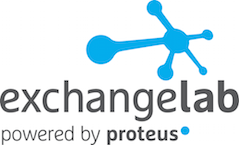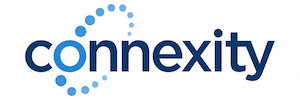Blog
Program Areas
-
Platform Partners are completely integrated with the Turn platform and provide a range of technologies including data, inventory, CRM on-boarding, cross-device, search and more. With a simple click from the Turn dashboard, these technologies can enhance your marketing campaigns. The Turn Digital Hub for Marketers integrates a host of industry-leading technology resources to help drive successful digital strategies, right from the Turn dashboard. With a single click, you can access a multifaceted ecosystem of Platform Partners selected by Turn for the value they add to the platform and our clients’ campaigns. Turn partners not only help you to identify and reach your audiences, but bring enhanced metrics and analytics to help grow the success of future campaigns. With Turn Platform Partners, you can take advantage of an expansive set of technologies to create and enhance your digital marketing campaigns, without having to screen vendors or manage multiple vendor relationships. Our partners deliver niche and specialized technologies to enhance the success of campaigns across display, video, mobile, and social. Specific partner capabilities include: Data Inventory Site Personalization Search Measurement/Analytics CRM Onboarding Expanded data sets and integration with custom data contracts Featured Platform Partners AcquireWeb Acxiom Adap.tv Adbrain AddThis AdExtent ADmantX Admeta Adobe Audience Manager Adobe Test & Target Adometry Adscale AdStir Alenty Alliant AppNexus AudienceRate BrightRoll Buzzinate CCI Cross Pixel Media Crosswise Datalogix DataXpand Datonics DoubleClick Ad Exchange (Google) DoubleVerify Epsilon eXelate Experian Eyeota Facebook Exchange Grapeshot I-Behavior Improve Digital Index Exchange Integral Ad Science IRI IXI Kenshoo LiveRail LiveRamp Lotame Lotame Mobile Powered by AdMobius Mark and Mini MARKETPLACE Maxymiser Microsoft Advertising Exchange Millennial Media Exchange Monetate MoPub Navegg Neustar/AdAdvisor Nielsen NinthDecimal Omnibus OpenX OpenX Market Jp Opera Mediaworks Peer39 by Sizmek Proximic PubMatic PulsePoint Rubicon Project SaleSpider Media Smaato SmartAd smartclip SOVRN SpotXchange StickyADS.tv TailTarget Teads Tremor Video TrustMetrics uKnow V12 Visual DNA Yahoo! Ad Exchange YIELD ONE ASIA Yieldlab --- For the full article and to request a demo, visit http://bit.ly/1O2Ovgq (link is external)
-
Blog
Rocket Fuel Leads Programmatic Industry beyond 1:1 Marketing with “Marketing in the Moment” to Improve Performance and Reduce Wasted Spend
Redwood City, Calif., Sept. 16, 2015 – Rocket Fuel (NASDAQ: FUEL), the leading Programmatic Marketing Platform provider with Moment Scoring™ technology, today introduced its “Marketing in the Moment” approach to move marketers beyond one-to-one marketing and deliver higher performing marketing campaigns at the precise moment of influence. With 1:1 marketing, marketers waste dollars messaging to static segments and profiles, constraining themselves with predetermined spend by channel and evaluating campaigns after the fact, rather than dynamically in real-time. Marketing in the moment means that marketers can leverage real-time, contextual data to determine the best message in a moment, score each moment to improve marketing actions in real-time, and benefit from a more accurate media mix. “Rocket Fuel is leading an industry transformation to deliver marketing campaigns that target consumers at precise moments of influence,” said Monte Zweben, interim CEO, Rocket Fuel. “Rocket Fuel’s Moment Scoring technology is purpose-built to learn the critical—and often hard to recognize—predictors of what makes one ad more appropriate than another, in a particular moment, to deliver on a marketer’s goals.” Rocket Fuel’s leading Programmatic Marketing Platform, which is comprised of a Saas-based Demand Side Platform (DSP) and Data Management Platform (DMP), is supported by three pillars of Rocket Fuel’s unique Marketing in the Moment approach: Moment Scoring. Rocket Fuel performs a real-time calculation of each ad opportunity based on the likelihood that a consumer will engage in a desired action across channels, devices, and objectives. Rocket Fuel has spent years fine tuning its technology to understand emergent patterns in consumer data. With Moment Scoring , Rocket Fuel uses these patterns to discover attributes and variables for each ad opportunity—that would otherwise be obscured by the complexity of the data—to improve results for marketers whether they are trying to drive online conversions, improve brand preference, or any other business goal. Marketing that Learns. Rocket Fuel’s AI automatically learns over time and adapts to improve campaign results. When Rocket Fuel serves an impression, it learns about the outcome of each ad delivered and applies that knowledge later in a campaign. The result for clients, over time, is a higher performing campaign as the model increases the number of attributes considered in a score to create better performance toward the marketer’s goal. Media Mix that Adapts. Realizing the full power of Moment Scoring means thinking about channels, including display, mobile, social and video; devices; and objectives all together, not in silos. Customers using Rocket Fuel experienced an average increased ROI of 31% in initial cross-device campaigns. With Rocket Fuel, marketers can run campaigns that leverage unified profiles, which provide a singular view of an individual across desktop and mobile devices. Moment Scoring operates consistently no matter how the consumer is interacting with a marketer’s message, so Rocket Fuel can identify influential moments on any digital channel or device. The result is an opportunity to improve performance and reduce ad waste by serving the right ad to the right consumer on whichever device he or she is using at the moment of greatest influence. --- Full article available at http://bit.ly/1SZubmI (link is external) -
Torsten Schuppe, Graham Bednash and Emily Sears from Google Marketing talk candidly about how Google uses programmatic in its digital campaigns, and the three key things that advertisers can learn from their experience. "Our core goal as marketers is to create communications that matter to our audience and add value to their everyday lives. Programmatic technology is enabling us to do that better than we ever have done before." -Emily Sears, Head of Digital, Google Media Lab EMEA
-
Telcos continue to be big ad tech acquirers. Norwegian mobile carrier Telenor on Monday snapped up cross-device company Tapad for $360 million. Tapad is one of the two largest cross-device vendors in the space; Drawbridge is the other. It’s a move somewhat reminiscent of the AOL/Verizon deal (link is external), but with more global scale, said Tapad CEO and co-founder Are Traasdahl, who also is from Norway. “The Verizon and AOL deal is a good one for both of them if they can execute on it, but they are two US companies with no real international presence,” Traasdahl told AdExchanger. “With this deal, Telenor can help us get into other markets where we aren’t currently, like Southeast Asia, where the cell phone is often the only screen people are using.” Listed on the Oslo Stock Exchange and headquartered in Norway, Telenor has 200 million subscribers across Scandinavia, Eastern Europe and Asia. And it’s got churn to reduce, average revenue per user to juice and dumb pipes to monetize. Which is why the trend of telcos and advertising coming together is something the industry is going to see more of, Traasdahl said. “Historically, telcos have bigger systems and have taken longer to make real-time decisions around traditional CRM,” he said. “But technology coming from the advertising world is more real-time, as we know, and completely data-driven.” The opportunity is ripe, said Jennifer Lum, chief strategy officer and co-founder of Alephic. “We saw early initiatives from AT&T AdWorks (link is external) and Verizon’s Precision Market Insights (link is external), but scale was challenging at times,” Lum said. “Investing in bringing ad tech and probabilistic data linking capabilities in-house should allow more telcos to bring more scalable and competitive ad solutions to market.” Tapad will continue on as a standalone subsidiary, keeping its focus on its existing client base while dedicating 15% of its resources to the Telenor business with a plan to swell its existing ranks – Tapad’s headcount stands at around 165 – as swiftly as possible. All of Tapad’s current employees will be staying on board. Through the deal, Telenor will get the royal treatment from Tapad. Telenor will be “a customer similar to our other customers, but a very special one,” Traasdahl said. What Tapad can help Telenor do with its deterministic subscriber data is an interesting proposition, but it’s still in the works from a practical point of view. Still, 200 million users is a healthy truth set to feed a cross-device identity graph. “We have a data set they don’t typically see – anonymized data that sits between mobile devices, tablets and computers, as well as purchasing behavior and insight into what consumers are doing – and from the telco side, they of course have access to data that few others have,” Traasdahl said. “But there is no big announcement yet around what we plan to do there yet, although there’s a lot of potential for product research and innovation.” --- Full article available at http://bit.ly/1SyaMZK (link is external)
-
Ladies and Gentlemen, we are living in the middle of a revolution. It is a revolution without banners, guns or a guillotine. But it is still a revolution turning the world upside down and leading us to question established certainties. As with every revolution, we do not know yet if it will work out for the better or for the worse. Both outcomes are possible: it is possible that in an on-line world more people will have access to knowledge, to innovative ideas and to global prosperity; that we will learn to understand one another better and to make ourselves understood better. But it is also possible that we will turn into remote-controlled ‘data cows’ who live in a world ruled over by a handful of multinational companies. The title you gave me for my talk – 'Technological Totalitarianism, Politics and Democracy‘ – hints at both outcomes. Both developments are possible. But I believe that the future will not be black and white. I believe the future will be grey. In other words: we will get a combination of both worlds. It should not come as news to anyone that a technological revolution always has major social implications. The industrial revolution which unfolded in the 18th and 19th centuries brought with it massive change: social and economic, political and cultural, urban and climatic. In its wake, new political movements took shape. These political movements drew attention to the social issues of the time and in the process gave our societies a democratic basis. In the longer term, technological progress went hand in hand with social progress. I am convinced that for a new technology to be both sustainable and successful it must contribute to social progress. But what if we apply this analysis to a technological innovation which casts itself as a wrecking ball; a technological innovation whose aim is not just to play with the way society is organised, but instead to demolish the existing order and build something new in its place? The answer is that we are no longer talking about a process of technological or economic change. We are talking about a process which will change whole societies, indeed change the way we live in the future. Digitisation and Big Data are ushering in a new era in economics, in social relations, in data protection, in the media and the arts, in science and medicine, in the world of transport, in national security and in foreign policy. Politically, this means that the internet is no longer something which can be considered in isolation. From now on, every 'internet issue' will also be a social issue. For that reason, we cannot leave this to the nerds. It is a debate in which all sections of civil society must have their say. --- Full speech available at http://bit.ly/1KfEXUr (link is external)
-
Last February, Google launched its YouTube Kids (YTK) app in the U.S., which it described as a “safe” environment for children five and younger. The app enables children to access a wide range of video content on their mobile devices. But in creating YTK, Google ignored the need to incorporate programming and advertising safeguards for children, which have long been required of U.S. television providers (both broadcast and cable). The app is filled with advertising that is directly integrated into the flow of programming content, including long-form (30-minute) product-placement pitches; content inappropriate for young children (such as videos “that model unsafe behaviors such as playing with lit matches, shooting a nail gun, juggling knives, tasting battery acid, and making a noose”); and endless pitches for junk food—even though Google promised YTK would not include such ads. CDD and other consumer groups have filed a series of complaints at the FTC about YTK. Nevertheless, the app has been extremely successful, and recently launched in the U.K., Ireland, and Canada. With children increasingly viewing content on a range of devices, especially mobile phones, there is a global digital gold rush by leading commercial providers (Amazon Netflix, and companies from the EU) who now offer new forms of child-focused cross- platform programming. Youth generate or influence $1.2 trillion a year in revenues, for example. But while there are limits and rules in most countries regarding the delivery of video content to children on television, there are few such policies when the same content is delivered via mobile phones, apps, or social media. Privacy issues are also a concern, given the ubiquitous nature of data collection across devices and applications. Companies such as Google may claim they are not directly gathering information on young children (to comply with the U.S. children’s privacy law, COPPA, for example). But an array of sophisticated analytic and measurement techniques is at work to help document and “monetize” how children interact with digital content. Another issue is that parental consent can trigger ongoing data profiling and targeting, including real-time and location-aware practices that have consequences few parents understand. For example, continuous behavioral targeting can ensue if a parent agrees to having online content “personalized” for a particular child. Or, in exchange for the data gathering that allows for such personalization, “free” content will be offered. There is a range of powerful advertising tactics that—when directed at children—require safeguards beyond mere parental consent. For adolescents in the U.S. there are no data or ad safeguards. Once they turn 13, teens are treated as if they were adults by online marketers. In the EU, the forthcoming GDPR raises the age requiring parental consent to 16, but Member States can opt out of that requirement. Some observers—including those backed by industry—have criticized this provision, concerned that teens will be denied access to important content and services (especially on social media). --- Full article attached.
-
Six months ago at the US DoubleClick Leadership Summit, we announced (link is external) the start of testing for Programmatic Guaranteed, a new way to use programmatic pipes to execute direct deals. In this time, over 300 advertisers and 200 publishers have tested this capability, and we’ve seen impression volumes double every quarter. Based on your feedback, we’ve made several changes and significantly improved the product. So today, we’re announcing the public beta of Programmatic Guaranteed and opening it to any advertiser using DoubleClick Bid Manager or publisher using DoubleClick for Publishers*. Programmatic direct spending was expected to reach $8 Billion in 2015 in the US alone - more than 50% of total programmatic display ad spend1. Initial steps to bring the benefits of programmatic to direct deals have been focused on automating the deal booking process. While that’s a good start, it only scratches the surface of what programmatic technology can do. The true value of programmatic direct will be achieved when the power of real-time, data-driven decisions is combined with access to brand safe, reserved publisher inventory currently available through direct sales. This will not only shorten the time it takes to book and execute high value reservations type deals, but also improve advertising performance. That was our goal when developing Programmatic Guaranteed. It’s the only product available today that uses real-time bidding infrastructure to bring the power of programmatic to direct sales. Advertisers and agencies get access to premium guaranteed inventory with cross-campaign / advertiser optimization and frequency management across programmatic and reservation inventory. Publishers can lock in revenue through reservations, forecast against programmatic deals, and enjoy the ease of automated billing and collections. All that without the need to email tags, worry about creative controls, resolve discrepancies, or fax I/Os back and forth. --- Full article available at http://bit.ly/1WB1dd0 (link is external)
-
Find Influencers With Your Content. Upload or Link to any piece of content. Your latest blog or that killer white paper you just wrote. Sit back, our algorithm is doing the work here, sit back and enjoy that cup of tea. INFLUENCE Here are 25 influencers that match to your content. Start influencing! About Influencer Marketing We focus on helping brands and agencies engage with the inner circle of influencers so that through their networks they can help you more effectively influence your end target audience. “Engage with the right influencers at the right time with the right content” IDENTIFY your company’s key influencers. ENGAGE effectively through content seeding and social outreach. MEASURE the ROI and performance of your influencing activities. SCALE your program to influence more. Software INFLUENCER FEED: Keep an eye on everything that is said by your key market influencers in this comprehensive and detailed timeline. INFLUENCER PROFILES: Full profiles of your influencers are essential to better understand them in order to tailor your engagement. CONTENT SEEDING: Want to seed excellent quality content with your influencers? Easily surface content opportunities with this feature. NETWORK MAPS: These maps help you understand key relationships between your influencers and lets you see who talks to whom. REAL TIME ALERTS: Stay up to date on everything that’s happening; topic notifications, content opps and much more. MEASUREMENT REPORTING: This functionality provides you with the data and insights you need to understand key online discussions. --- Full article available at http://bit.ly/1OwFGPA (link is external)
-
Every day, consumer audiences engage a vast array of digital media as they spend an increasing amount of time online, particularly on mobile devices. To reach them with targeted messages and compelling offers requires the perfect fusion of proven direct marketing principles with best-of-breed ad technology. It requires Wiland Digital Solutions™. Leveraging our massive consumer transactional data, sophisticated analytics and predictive modeling, we help marketers focus their digital advertising efforts with remarkable precision. Our unique ability to identify and reach the best prospects and customers delivers maximum ROI, both online and off for clients in a broad range of consumer, nonprofit and publishing sectors. The Wiland Advantage: The Nation's Most Comprehensive Consumer Database It all begins with the Wiland database—the largest, most diverse consumer transaction database in the U.S. Continuously updated by the transactional data of thousands of companies and organizations from multiple industries, our database includes myriad data points on more than 235 million U.S. consumers. Using this vast data, Wiland builds precise models capable of pinpointing the online audiences most likely to respond, convert and become long-term value customers, donors and subscribers. Our methodology is based on one simple but powerful truth: The best predictor of future transactional behavior is past transactional behavior. And we have more of this in-depth data than any other marketing intelligence company. When digital advertising is based on data of this depth and quality, marketers can be confident that they are investing their online advertising budgets wisely and will see outstanding results. Beyond Response: Finding High-Value Customers or Donors While it is easy to measure digital advertising simply in terms of clicks and conversions, we help our clients take a more strategic view of their online marketing opportunities. We enable them to reach not only more customers but better customers—those most likely to become loyal, repeat buyers, donors and subscribers. In today's loyalty-strained consumer economy, our ability to help marketers identify, reach and cultivate long-term value customers can make the difference between profitability and struggling to combat costly low-value customer churn. Our Solutions Our highly targeted, data-driven display advertising capabilities are delviered through four solutions: Acquisition Marketing (link is external) Affordably acquiring new, high-quality customers, donors and subscribers Customer/Donor Marketing (link is external) Increasing revenue and profit from active and lapsed customers, donors and subscribers Retargeting (link is external) Boosting typical retargeting response rates by segmenting recent site visitors and optimizing creative and bidding accordingly Co-Targeting (link is external)Enhancing response in multichannel campaigns with closed loop measurement of results --- For the full article, visit http://bit.ly/209EKG8 (link is external)
-
Robert Kyncl, the Chief Business Officer at YouTube, gave a keynote speech at CES 2016 (link is external) yesterday. Video marketers will want to make the time to watch all 57 minutes and 36 seconds of “Robert Kyncl, YouTube - Keynote 2016,” which was uploaded to the CES channel (link is external) today. Now, I realize that urging you to carve almost an hour out of your busy schedule seems like I’m asking you to make an enormous investment of time. But, trust me, Kyncl delivers the kind of strategic insights, critical data, tactical advice, and latest trends in the digital video marketing business that will give you a colossal return on that investment. After watching the video above, I asked Michelle Slavich, the head of Entertainment Communications at YouTube, for a transcript of Kyncl’s keynote. You will find it below. Now, I haven’t made that kind of request since I managed to get a copy of John Green’s keynote address (link is external) at VidCon 2015. So, I thought Kyncil’s keynote contains insightful analysis and interesting information that is beyond obvious. Nevertheless, after watching Kyncl’s keynote, you may also want to read the transcript below – because you’ll want to read them again and again as you chart a course from now to 2020. The only things missing in the transcript below are the unscripted remarks of Scooter Braun, founder of SB Projects, Nick Woodman, CEO of GoPro, and Chris Milk, CEO of Vrse, who Kyncl invited on stage to share their stories. "Thank you. It’s an honor to be back delivering a keynote here at CES, especially just one day after my former boss Reed Hastings. The last time I was here was in 2012. I had been at YouTube just a little over a year. And I really wanted to impress all of you, so I did what a lot of executives do at CES: I made a few predictions. I said that by 2020, 90 percent of all internet traffic was going to be video traffic. I talked about Michelle Phan, a young girl who had a makeup channel on YouTube that was drawing a ton of viewers and told you that she would be a major success. And I also said that by 2020, 75 percent of all video people watched in the US was going to be transmitted through the internet. So how did I do? First, internet traffic. Cisco predicts that video will actually reach around 90 percent of global internet traffic by 2019—so a full year ahead of schedule." --- For the full transcript of Kyncl’s keynote, visit http://bit.ly/1ZkNgQr (link is external)
-
Every day, TapFusion enables brands and agencies to reach billions of consumers with scalable, influencer-driven content. TapFusion is our proprietary SaaS platform that automates the process of identifying, distributing and measuring high value influencer marketing campaigns. TapFusion is our proprietary SaaS platform that automates the process of identifying, distributing and measuring high value influencer marketing campaigns. Influencer Recruiment & Enrollement Influencer Our opt-in marketplace grants you instant access to thousands of registered, vetted, experienced influencers, waiting to work with you, and acceptance rates of over 80%. ---- For a demo, visit http://bit.ly/1ZX5LfW (link is external)
-
The AddThis Audience Intelligence (Ai) platform combines big data, machine learning and deep ecosystem connections into tools that help you stay ahead. Our Products Are Built to Help You Optimize Your Marketing Outcomes: DISCOVER See inside custom audiences to reveal content engagement habits, geographic distinctions and brand adjacencies. ACTIVATE Find your most relevant audiences – quickly, and at scale. ENGAGE Deepen audience relationships with relevant calls to action on your own site. CONVERT Connect with your audience by sharing multimedia content you know they’ll care about. It All Starts with Extraordinary Data With 15 million sites in our ever-expanding data co-op, AddThis has unparalleled insight into the interests, intent and activity of over 1.9 billion uniques on the open web. No other entity can match the reach or depth of the first party permissioned data ingested into Ai every day, which means only AddThis can provide you with a truly current and holistic view into what your audiences actually care about. Built on Open Source Technology AddThis has written open-source code that others, such as Facebook and Twitter, now use to manage tremendous volumes of data. Our native technology includes innovations that take you through the data funnel; from processing billions of requests to storage and refinery to turning them into actionable insights. --- For more information, visit http://bit.ly/1mL2yS9 (link is external)
-
Rubicon Project offers real-time trading technology that automates the selling and buying of online advertisements. Rubicon Project’s automated advertising platform has surpassed Google in U.S. audience reach and is used by more than 500 of the world’s premium publishers to transact with over 100,000 ad brands globally. The company’s customers include eBay, TIME, ABC News, the Wall Street Journal, Tribune Company, Virgin Media, People, Universal and many other Fortune 500 companies.Rubicon Project performs 125 billion real-time auctions on their global transac- tion platform per day. That translates to about 4.0 petabytes of data that needs to be managed and analyzed.The ChallengeRubicon Project has relied on Hadoop for several years to store and analyze its data. However, the company’s business was growing rapidly and they needed to move to a fault-tolerant, mission-critical Hadoop production system. They needed high availability of services and jobs as well as data protection and disaster recov- ery capabilities.MapR Solution“We made a decision that Hadoop was going to be a critical piece of our day-to- day operations,” explains Jan Gelin, Rubicon Project’s VP of Engineering. “The problem with Hadoop was instability. We had to solve that problem. That’s where MapR comes in.”Rubicon Project chose the MapR Distribution including ApacheTM Hadoop® because of its enterprise features including high availability, data protection and recover- ability, disaster recovery and advanced monitoring features. “Redundancy and the availability of support are critical to our business,” says Gelin. ---For the full brief, download the attached document.
-
From our living rooms to the palm of our hands, screens big and small are giving us the flexibility to access content whenever and wherever we want. While this 24/7 access appeals to consumers, it has complicated campaign planning for advertisers. People can now see the same brand ad on different screens and at multiple times on any given day, whether they are on their mobile phone or watching their favorite TV show. Facebook wanted to understand the neural impact of preceding an ad exposure on one platform with an ad exposure on another platform (beyond what was attributable to increase in frequency). To study how people’s brains respond to TV ads after seeing that same ad on a mobile phone or on TV, we commissioned Neuro-Insight, a neuromarketing agency in the US. Methodology In September 2015, we measured the brain activity of 100 volunteer participants in the Neuro-Insight lab. During the 2-day test period, the participants, US adults ages 21–54, were assigned to 1 of 2 randomly selected groups. On Day 1, participants in one group watched a TV show with ads while participants in the other group browsed their own Facebook News Feed, which included test ads, on their mobile phone. On Day 2, participants in both groups watched the same brand ads during a new TV show. The brand ads shown during the test period represented a mix of verticals—including Automotive (2), CPG (1), Entertainment (1) and Tech/Telco (2)—and creative ad formats, including display and video. During the test, participants in each group wore EEG caps that measured responses correlated with real behavior from different parts of their brains. Neuro-Insight was able to measure their responses against neural metrics Approach/Withdrawal—the brain’s response to positive and negative emotion—and 3 key neural metrics that were the focus of our study: 1) Engagement, an indicator of how involved people are, 2) Emotional Intensity, a measure of the strength of emotion being experienced, and 3) Memory Encoding, the rate at which the brain is storing the current experience about the brand into long-term memory, where it can be recalled more than a few minutes later. This metric is recorded for the left brain as Memory Encoding detail and for the right brain as Memory Encoding global. Understanding the multiscreen impact Higher levels of brain activity were reported among participants who saw ads on Facebook first and then watched TV ads the next day. This result was consistent across all metrics measured. For Memory Encoding, we saw that participants first primed with the TV ad performed below the 50th percentile for Memory Encoding when they viewed the TV ad on Day 2. Meanwhile, participants first primed with the ad on Facebook scored above average on this metric. --- For the full article visit http://bit.ly/1M38ISe (link is external)
-
Solving Critical Problems for Both Advertisers and Marketers: Marketing / IT Problems: Acquisition, Retention, & Growth Poor Marketing Measurement Lack of Online/Offlne Integration, Channel Efficiency Solutions: Databases for cross channel residential and business marketing, third party data sourcing, modeling and analysis, campaign management and execution reporting Closed loop response attribution, cross channel dashboards, performance benchmarking, ROI & business case Online and offline customer data integration, real-time leverage of unified customer intelligence across channels Customer Insights Problems: Lack of Behavioral Insights Across Channels Optimize Customer LTV/Portfolio Managing the Customer Lifecycle Across Channel Solutions: Customer Data Integration, behavioral segmentation, purchase analysis, channel analysis, media consumption segmentation, reporting & dashboards Customer Data Integration, customer profitability and LTV, customer segmentation across lines of business and products, share and size of wallet Customer Data Integration, funnel analysis, conversion analysis, marketing strategy & program design recommendations for cross channel campaigns Sales Problems: Poor Sales Conversions/Close Rates Optimize Sales Coverage Against Best Opportunities Poor/Ineffective or Un-Prioritized Leads Solutions: Audience and business data integration and analysis, go-to-customer strategy design (share of wallet driven), funnel & conversion analysis Multi-dimensional sales coverage & mapping, sales performance and profitability, scenario planning New business leads, specialty data, modeled lead intelligence, connectivity between marketing database & SFA tools --- Full article available at http://bit.ly/1RNUtcm (link is external)
-
The Exchange Lab works with brands and agencies to plan and execute the most effective, strategic digital advertising campaigns. We provide a brand safe environment that adheres to all of the industry codes of conduct, offering campaign transparency and viewability metrics. But that’s not all. Every campaign is unique so we tailor our solutions to your marketing objectives. Build Brand Awareness: Focusing on audience first, we connect brands with their consumers in the right place, at the right time, across devices. Acquire New Customers: Prospecting allows you to identify those most likely to be potential customers, connect with them and then multiply this at scale. Re-Engage Audiences: We do this by continuing to build the relationship through content that clearly communicates your message. The customers that have shown an interest in your brand are more likely to engage, whether your campaign metrics are awareness or conversion based. Drive Performance: We adjust campaigns using real-time insights to inform budget weightings and spend allocations to ensure the best campaign performance possible. You don’t need to worry about how much you are putting against video, display or mobile specifically - we do that for you. The Programmatic Marketing Experts Devices: It’s all about priorities. Apparently our phones are more important to us than our wallets. It only takes the average person 54 minutes to report a stolen phone, but over 23 hours to report a stolen wallet. This is another reminder that the modern consumer is ‘always on.’ They shift seamlessly between devices to consume content whether it’s mobile, tablet, desktop or connected TV, so as a brand, you need to be able to reach them across devices. Channels: Content is king but context is emperor. We understand how important it is to deliver the right content through the right channel. Our team works tirelessly to provide you with one point of access to the entire ecosystem. --- For more, visit http://bit.ly/1YxBW8x (link is external)
-
Blog
New MMA White Paper Reveals How Top Brands in Retail, Restaurants and Non-Profits Are Using Location Data for More Effective Audience Targeting
No Longer Just a Tool for “In the Moment” Targeting, Marketers Are Now Leveraging Location Data to Build Rich Audience Segments Based on Actual Behaviors
New York – February 26, 2015 – Major brands are now using location data for purposes beyond targeting consumers at a particular moment in time. Marketers are leveraging location data to build much more comprehensive audience segments, which can be used to target consumers in a wide array of mobile campaign scenarios. This according to a new white paper produced by the Mobile Marketing Association (link is external) (MMA) on behalf of the MMA NA Location Committee Audience Working Group. Titled, “Using Location for Audience Targeting”, the paper reveals how user location and place data is evolving from a tool used primarily for “in the moment” targeting, to an essential component in the creation of accurate audience segments. While location data has already proven to be an invaluable resource in reaching customers at a particular place and time, marketers are quickly realizing its value in creating comprehensive audience segments for other mobile targeting purposes, particularly when paired with app, household, purchase and publisher data. “Given its unparalleled ability to tell marketers where consumers have been, where they are, and where they’re likely to return, location data has become an essential mobile marketing tool,” said Sheryl Daija, Chief Strategy Officer at the MMA. “Incorporating location data into the development of audience segments enables marketers to build a much more accurate and timely picture of the consumers they’re targeting, ultimately resulting in significantly better campaign ROI.” Traditionally, audiences have been derived from observed mobile usage, search and browsing history, or household data. While this static data can be helpful for reaching consumers at home, location-based data enables brands to reach potential customers at any time, as they move from place to place. Location data is also helpful in building more dynamic audiences because it takes into account the powerful context of where a user has been, something online and household data lacks. The paper explores how brands like Goodwill®, Pinkberry and Quiznos have successfully used location data to enhance audience segments and achieve impressive results using various campaign tactics. •Goodwill: Achieved a 43 percent increase in store visitation using audience targeting based on a combination of demographics and past visitation behaviors. •Pinkberry: Achieved a 100 percent lift in location-audience targeting tactics using audience targeting based on past visitation to health food stores, gyms and targeted fast food chains. •Quiznos: Achieved a 6 percent lift in sales using a custom campaign audience comprised of mobile users who frequented Quiznos and key competitors. “Location has evolved from a tool to target people where they are, to a platform of real-time insights about peoples’ true intent and actions. The power of location for targeting in the moment has been proven. Now, we can show how location has evolved beyond ‘marketing in the moment’, to enable marketers to create specific audience segments based on actual behaviors,” explained Monica Ho, SVP of Marketing at xAd Inc., MMA NA Board Member and Location Committee co-chair. To download the full white paper, “Using Location for Audience Targeting”, please click here (link is external). -
You are what you buy—Shopping data is a window into consumers’ lives. Their browsing patterns and purchases reveal their tastes, lifestyle, and aspirations. We track over 1 billion retail shopping points each month. This data is the foundation of our audience activation platform which enables brands to quickly connect with receptive audiences. Our unique combination of experience, data, and technology drives results. With over 15 years of retail experience, advanced data science and technology platforms, we translate our knowledge into effective marketing programs for our partners. Our proprietary retail data is the foundation of our campaigns. You’ll reach unique audiences since we don’t syndicate data to exchanges or outside media platforms. To ensure you effectively and efficiently reach your target audience we’ve developed an integrated platform that incorporates: A Demand Side Platform for media activation Contextual sites for relevancy & impact Proprietary retail data to power it all --- For more information, visit http://bit.ly/1ZcfazJ (link is external)
-
Blog
The Great Data Race
How commercial utilisation of personal data challenges privacy. Report, November 2015
A data race is taking place in the media and advertising industry. New technology and the ability to gather and analyse large volumes of data are changing the ways in which advertisers reach consumers. Consumers were once split into demographic groups, which were targeted via mass media. Today we are bought and sold one by one on global ad exchanges. This results in marketing which is highly targeted and which presupposes that the marketers have a thorough understanding of our habits, interests, tastes and network of contacts, in order to have the greatest impact. Google and Facebook dominate the market in automated ad trading because they have such an enormous amount of information about us. In Norway and Europe big media companies are currently building their own platforms for programmatic technology in an attempt to take on the global giants. The company who has the most data and the best technology is the winner of the data race. Every time we visit a website we don't engage with just one company, but many companies at the same time. As well as the publisher who owns the site, ad exchanges, demand side and supply side platforms, ad networks, data brokers and data management platforms are present using various tracking tools. Our report reveals that on average 43 different companies have a presence on Norwegian online newspapers and record what we do. Between 100 and 200 cookies were stored on our web browser when visiting the front page of six Norwegian newspapers. As a user, you may first notice the result of the cookies placed on your browser when the same ad starts following you around the Internet. The information that is gathered is used to build up comprehensive profiles about us. The more detailed the profiles are, the greater their market value. If we lose control of our own personal information, we also lose the ability to define who we are ourselves. No sector in the world knows more about us than the advertising industry. At the same time, we have very little insight into how these companies use the information they have about us. Privacy must not only give the individual protection against constant surveillance by the authorities, but also protect us against private companies monitoring everything we do. The individual is very small compared to a large corporation. Privacy legislation must redress some of this imbalance of power. Because the advertising industry is so lacking in transparency, however, individuals have limited opportunities to exercise their fundamental right to privacy in their dealings with it. The information asymmetry that characterises the market is a form of market failure. When consumers have no knowledge about what is going on, they cannot demand services that offer better privacy. The uneven distribution of information results in a competitive situation, which encourages the market players to use methods increasingly invasive of privacy. When we surf the Internet we want quick and easy access to the services we are searching for. We will almost automatically accept everything we are asked to accept. Making the processing of personal data subject to consent does not, then, have the intended effect. When we let individuals decide for themselves, the individual must stand alone against big and powerful players who are in reality able to dictate what the individual must consent to. The Norwegian Data Protection Authority will work to increase transparency and openness in the advertising market, ensure genuine freedom of choice for users and give the user more control over his or her own personal information. The most important recommendations and measures we propose in the report are as follows: Publishers (such as newspapers) must take responsibility for the third-party players they allow access to their pages. Companies engaged in the collection of personal data for profiling and marketing purposes must base the processing of the data on an active consent from the users Publishers must give all users access to their services, including those who do not consent to their information being collected. The privacy policies must be improved. They must be short and easy to follow, but must also include clear information about what data is collected, how it is processed and whether other players have access to the information. Publishers, media agencies and advertisers must join forces to produce guidelines that may contribute to greater openness and transparency about the nature of targeted advertising. --- Full report available at http://bit.ly/1Z89sz1 (link is external)



















